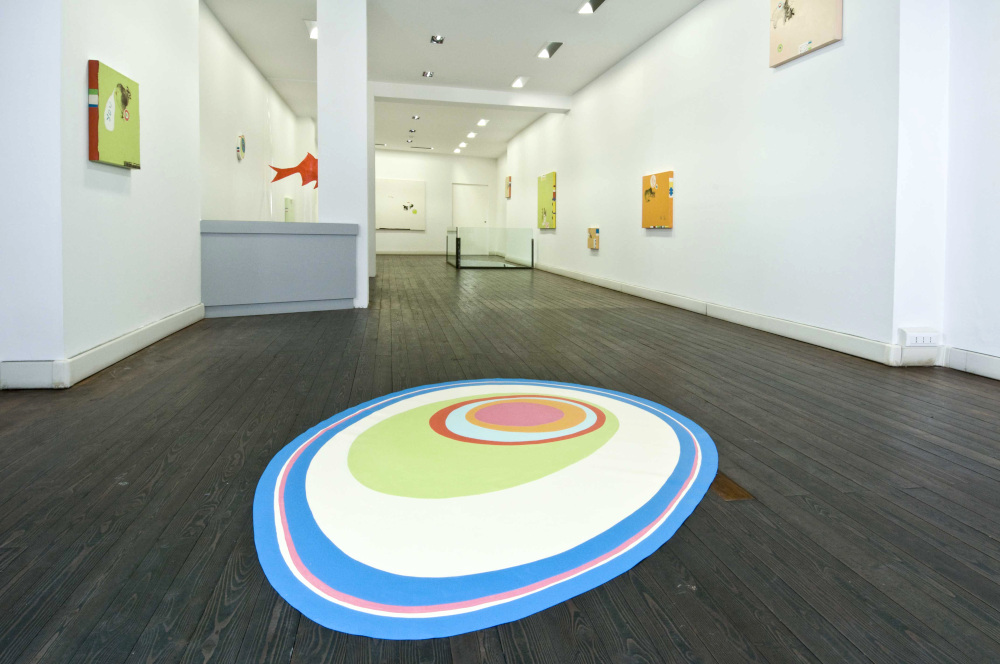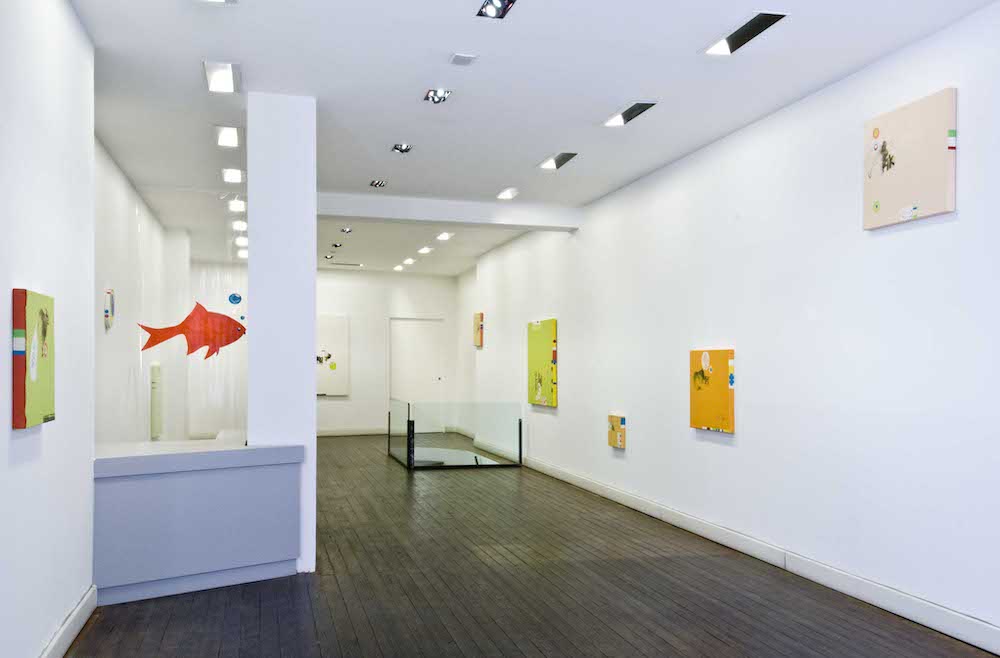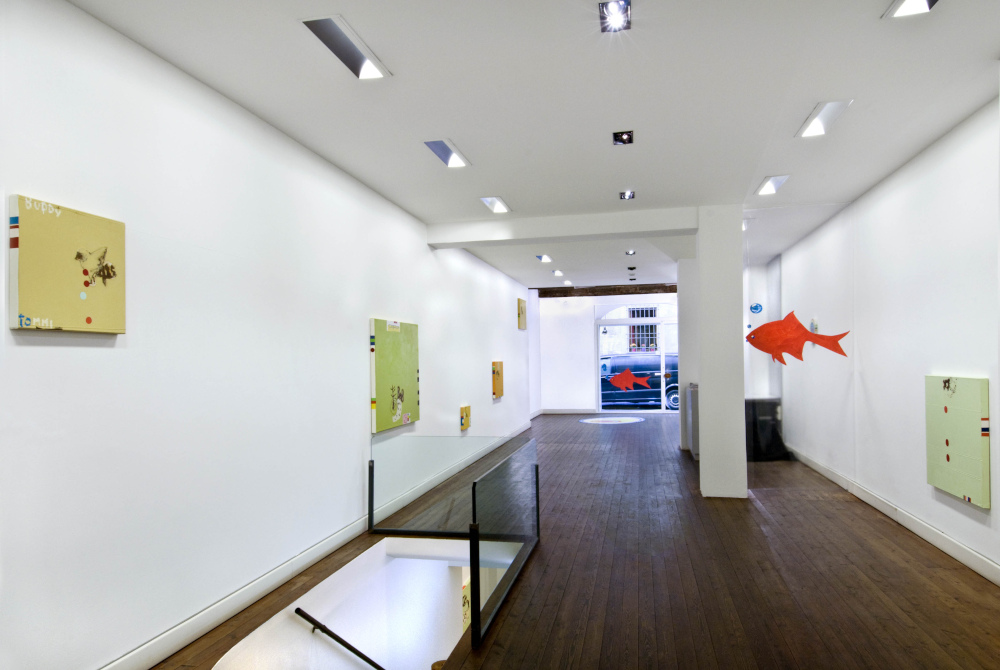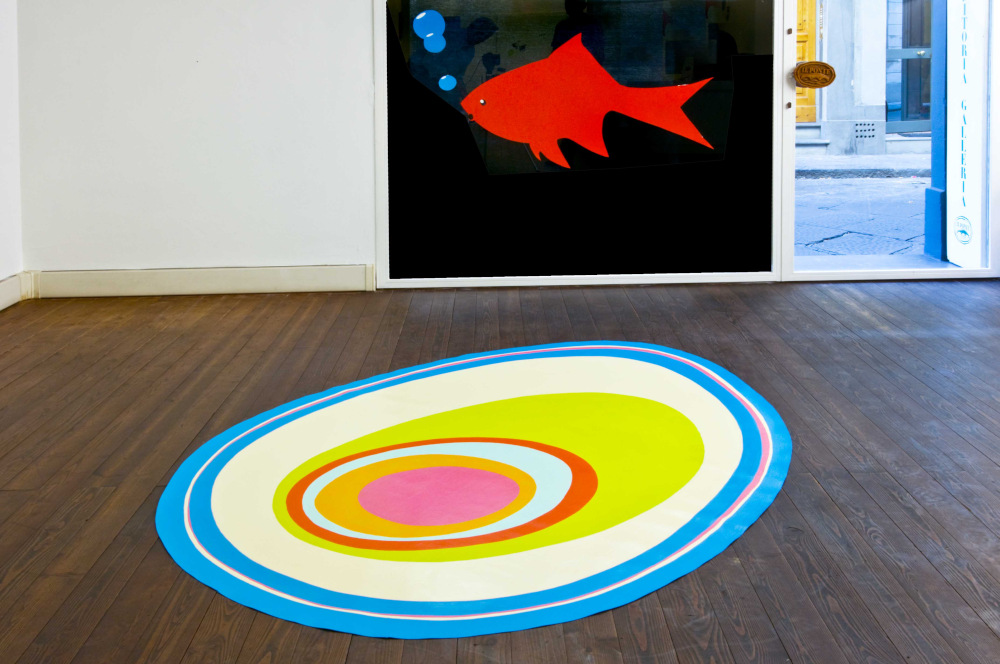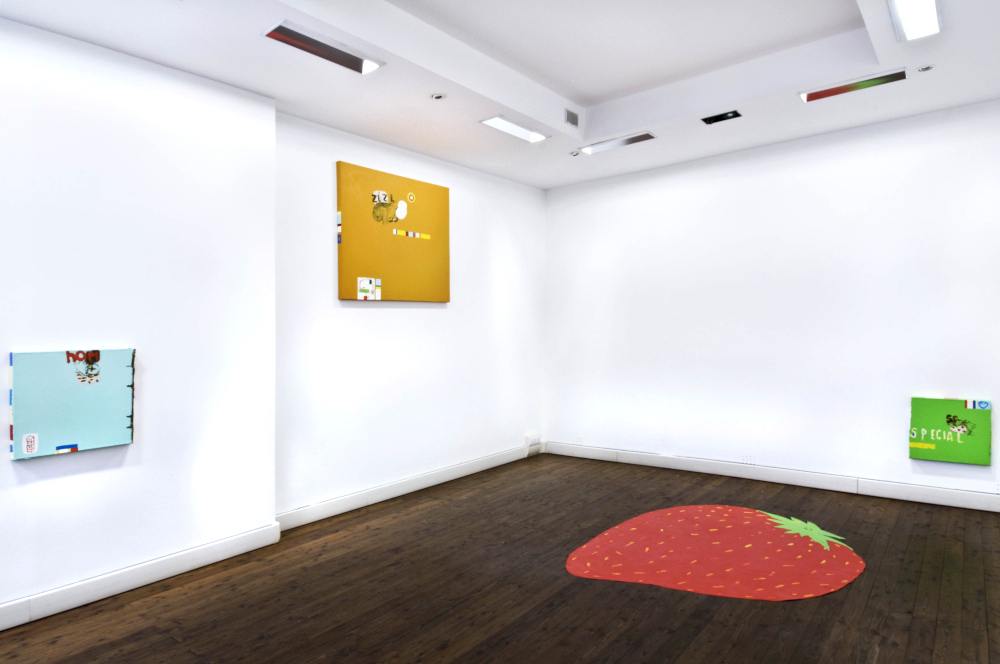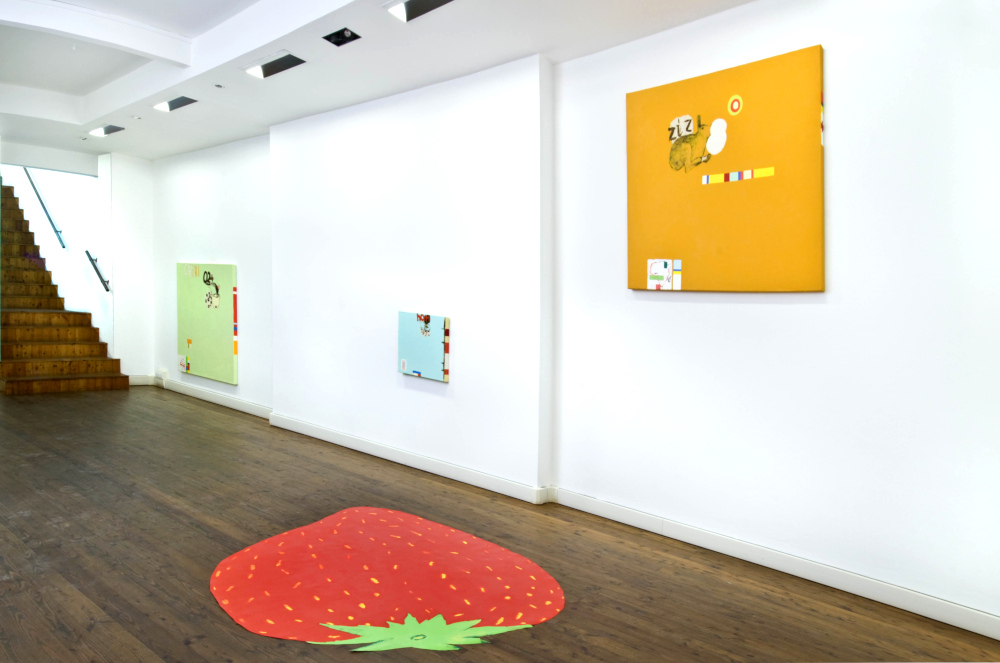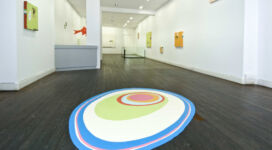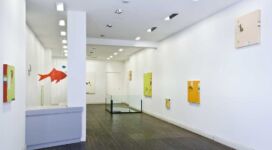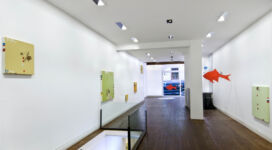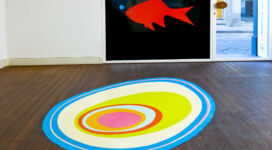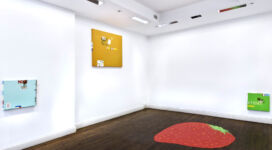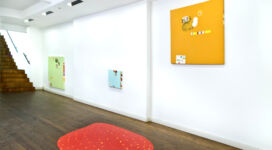| MAURO BETTI | Biography | |
| curated by MAURO PANZERA | Browse the Magazine | |
| 7 october – 11 november 2011 |
The exhibition by Mauro Betti inaugurating the autumn season at Galleria Il Ponte is a display of painting built on and for this exhibition space, in which the pictorial elements take possession of unusual places and positions. Just as, in the course followed by Betti’s painting, the tradition of aniconic and monochrome painting allows unexpected fragments of images transpire and emerge, this exhibition has taken shape with the same rhythm.
Text by Mauro Panzera in catalog:
His field of vision has a colour and the quality of that colour throws suspicion on the relationship between the vision and reality. This relationship is of course very complex, and many sciences come together in defining it. But a painter does not have the time to trifle with research and hypotheses, and then, for him, what he sees is what he knows, the ABC of visual thought. Reality itself is a hypothesis that is built starting from the various scientific and artistic pronouncements, in equal measure.
But this colour then also throws suspicion on a position within the history of art, the history of colours par excellence. So I would say that Mauro Betti’s easel is extremely learned, mindful of the wealth of vicissitudes traced by contemporary art, at least as of English-style pop culture, but there is also a massive dose of graphics culture and contemporary comic strips. The civilisation of graphics, of Pantone, has replaced the encyclopaedia of nature, the seasons, the latitudes, which conjured up thoughts and reveries of travel, exotic experiences, dreams…
Today this easel marks a point of arrival, I don’t know whether it is a station of transit or acquisition; however, I do know its history, at least from the first trials with painting in the early 1980s, and I feel I can say that while the previous stages in his work were to bring out various relationships, loans, homages and participation in ready-defined artistic movements… here and now all these supports fall away, no longer needed.
But, to go on, the field of vision is not empty nor pure as one may say; we are not seeing a fresh take on Monochrome Malerei; neither is it a curtain introducing a tale, a more or less sacred depiction. However, I would say that first of all it remains a field: not exactly a field of action as with the great Jackson Pollock, but, in short, the land of sightings and apparitions. And in first place it is a three-dimensional field because the thick edges of the body of the picture take part in the activity. The first sightings are right there, on the edges, samples of colour that take from the universe of flags – do you remember the old atlases? – but also from restaurateurs’ colour trials (the noble and the profane go hand in hand). Nothing more than signals, to which, however, the attention needs to be drawn – in order to show our awareness. As for their meaning… maybe we’ll find out more about that at the end.
But those chromatic signals also appear on the surface of the work, right in the middle of the field, the arena, and continue to perform the function of making themselves seen, nothing more. But making themselves seen first, because they are clothed in colour, while other presences – moreover very few and far between – stand to the side in the almost non-pictorial black, like a draft sketch: they are little animals, portrayed with great passion for likeness, and written signs, letters, syllables and at times whole words. In terms of quantity, the black beats the colour, but both float in the magnum sea of “monochrome”. So, as they both float, they play the same role, attesting that at the outset, sign and image are not disjoined; at the outset, there is one conception, and then the ways of civilisation become depleted and make them distinct, separate. Is it time to bring them back together? Sign and image, east and west, target and strawberry? And goldfish?
And if we were specialised in communication – now it’s even a degree subject – how could we interpret these exercises? Without doubt a percentage of communication can be found in every human act, and therefore also in a poetic construction of imagery, but what if we were to depart from this universal notion? The whole exhibition project would gain a dichotomous clarity: on one hand, totally communicative pop images – fish + strawberry; the target/eye is more ambiguous; on the other hand, hermetic fields of observation, where the sign equals the meanings by removing their sense. In short, this exhibition would come to seem a journey from the clear and evident to the complex and introverted and back again. In fact, there cannot be any direction; the spectator now becomes sovereign, and, as sovereign, decides his own path for himself. But it is the artist who embraces it all, because he knows it all.
Vice-versa, the painting, which has always known, now has the task of reflecting: about its own powers of course, but also about the precariousness of knowledge. Today, what is to be exhibited is not a knowledge, but a very high degree of awareness – the legendary self-consciousness of a philosophical time. The image is a complex problem: this is what painting has to say today. Perhaps it will be put back together at some point in the future, but now, in order to understand, it has to be broken down and analysed. A step ahead.
